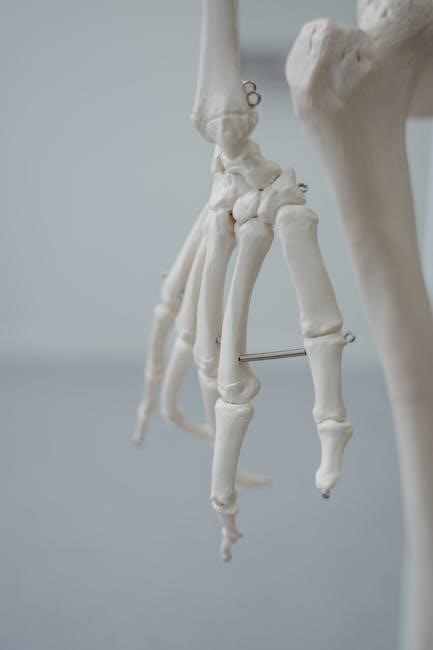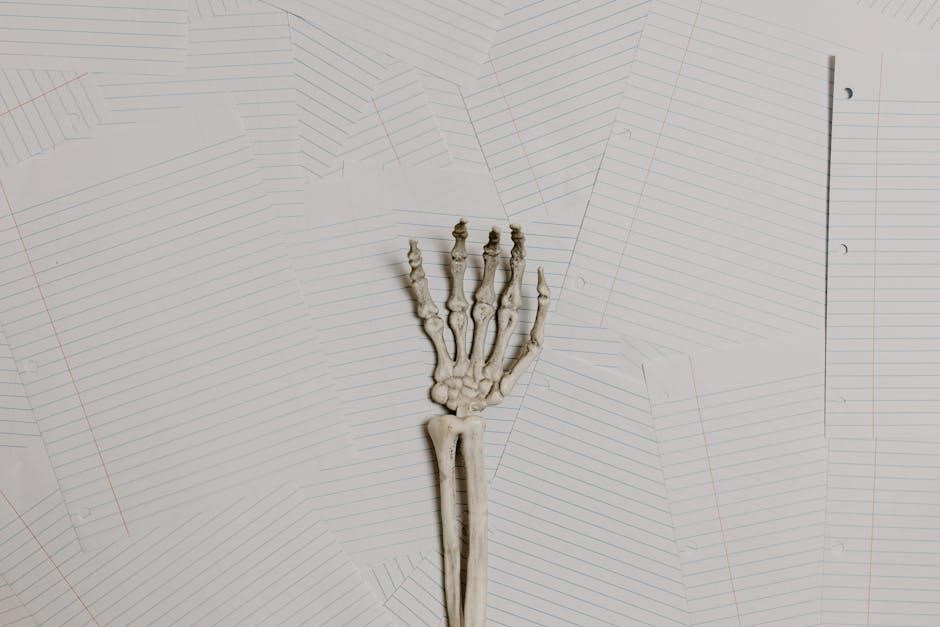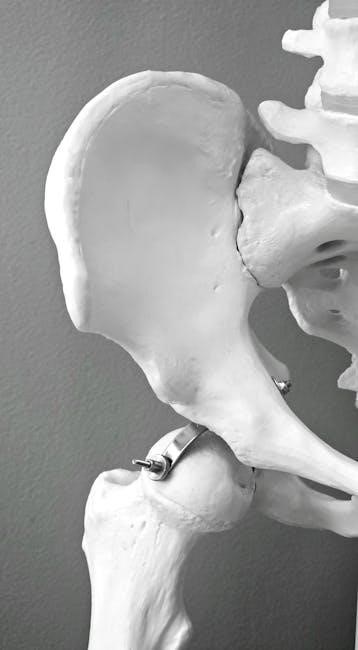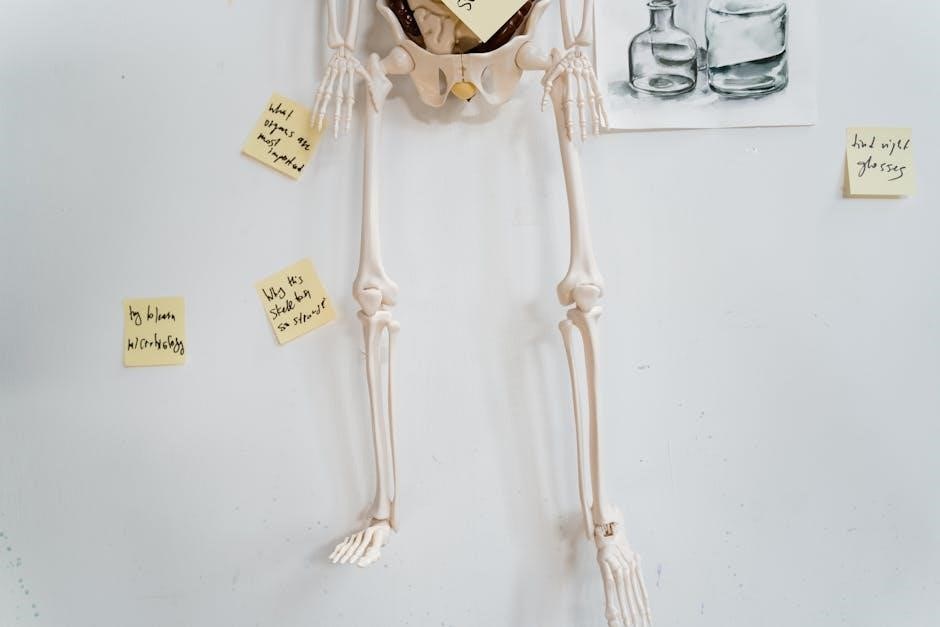Anatomy and Physiology Notes PDF: A Comprehensive Guide
Embark on a journey through the human body with our comprehensive PDF guide! These meticulously crafted anatomy and physiology notes offer essential insights, perfect for students and medical professionals alike.
Anatomy and physiology are intertwined disciplines crucial for understanding the human body. Anatomy explores the structure of body parts, examining their morphology and physical relationships. Physiology investigates the function of these parts, detailing how they work individually and together. These fields are inseparable; structure dictates function, and vice versa.

Our PDF notes provide a foundational understanding of both disciplines. Explore the intricate details of anatomical structures while simultaneously learning about their physiological roles. This integrated approach enables a holistic understanding of the human body. Dive into detailed diagrams, clear explanations, and concise summaries designed to enhance your learning experience. Whether you’re a student or a professional, these notes serve as an invaluable resource. Uncover the secrets of the human form and its remarkable functions.
Definition of Anatomy
Anatomy, at its core, is the study of the body’s structures and the relationships among them. It delves into the macroscopic and microscopic organization of living organisms, revealing how each component contributes to the whole. Anatomy is more than just memorizing names; it’s about understanding the form and arrangement of tissues, organs, and systems.

Our PDF notes offer a comprehensive exploration of anatomical principles, covering topics from gross anatomy to histology. Detailed diagrams and clear descriptions bring the body’s architecture to life, providing a solid foundation for further study. Whether you are just beginning your journey into anatomy, or seeking to deepen your understanding, these notes are an indispensable resource. Discover the beauty and complexity of the human form with our concise and informative guide.
Definition of Physiology
Physiology is the science that explores the functions of living organisms and their parts. It investigates how the body works, from the cellular level to the integrated actions of organ systems. Unlike anatomy, which focuses on structure, physiology emphasizes the processes that maintain life, such as respiration, digestion, and circulation.
Our PDF notes provide a clear and concise overview of key physiological principles, explaining how various systems interact to maintain homeostasis. We cover topics from basic cell function to the complexities of the nervous and endocrine systems. Whether you’re studying for an exam or seeking a deeper understanding of human biology, our notes offer a valuable resource. Explore the dynamic world of physiology and discover how the body orchestrates its remarkable functions. This is the essence of life.
Relationship Between Anatomy and Physiology
Anatomy and physiology are intricately linked, forming the foundation of understanding the human body. Anatomy, the study of structure, provides the framework, while physiology, the study of function, explains how those structures operate. This relationship is inseparable; structure dictates function, and function influences structure over time.
Our PDF notes emphasize this vital connection, illustrating how the design of each body part enables its specific role. For instance, the heart’s muscular walls facilitate its pumping action, and the lungs’ intricate alveolar structure maximizes gas exchange. By understanding this interplay, you can gain a deeper appreciation for the body’s complexity and efficiency. Delve into the synergistic relationship between structure and function with our expertly crafted notes. They are essential tools for any student. Discover more now!
Levels of Structural Organization
The human body exhibits a remarkable hierarchy of organization, each level building upon the previous one to create a complex and integrated system. Our PDF notes meticulously detail these levels, starting with the chemical level, encompassing atoms and molecules, and progressing to the cellular level, where these molecules form the basic units of life. Cells then organize into tissues, which perform specific functions.
These tissues combine to form organs, such as the heart or brain, which work together in systems like the circulatory or nervous system. Finally, all the systems integrate to form the complete organism. This structured approach allows for a clear understanding of the body’s intricate design. These comprehensive notes offer a systematic exploration of each level, providing a solid foundation for your studies. Perfect for students!
Chemical Level
At the foundation of life’s intricate structure lies the chemical level, the most basic level of organization. This level encompasses atoms, the fundamental units of matter, and molecules, which are formed when two or more atoms combine. Our comprehensive PDF notes delve into the essential chemical components of the human body, exploring the roles of elements like carbon, hydrogen, oxygen, and nitrogen. These elements form the building blocks of larger molecules such as carbohydrates, lipids, proteins, and nucleic acids, each playing a crucial role in the body’s functions.
Understanding the chemical level is essential for comprehending the subsequent levels of organization. The interactions and properties of these molecules dictate how cells, tissues, and organs are formed and function. Therefore, this section provides a solid foundation for grasping the complexities of human anatomy and physiology. Perfect for pre-med students!
Cellular Level

Ascending from the chemical realm, we arrive at the cellular level, where life truly begins. Cells, the fundamental units of life, are the smallest structures capable of performing all essential life functions. Our anatomy and physiology notes PDF provide a detailed exploration of cell structure and function, covering key components such as the plasma membrane, cytoplasm, and nucleus.
Within these notes, you’ll discover how various organelles work together to carry out essential processes like protein synthesis, energy production, and waste disposal. We delve into different cell types, each specialized to perform specific tasks within the body. From the oxygen-carrying red blood cells to the signal-transmitting nerve cells, understanding cellular diversity is paramount to grasping overall bodily function. Gain a solid foundation in cytology with our comprehensive resource!
Tissue Level
Moving up the hierarchy, we encounter the tissue level. Tissues are groups of similar cells performing specific functions. Our anatomy and physiology notes PDF meticulously detail the four primary tissue types: epithelial, connective, muscle, and nervous. Each type possesses unique characteristics and roles within the body.
Epithelial tissue covers surfaces, providing protection and regulating exchange. Connective tissue supports and connects various body parts, offering structure and transport. Muscle tissue enables movement, contracting to generate force. Nervous tissue facilitates communication, transmitting electrical signals throughout the body.
Within our notes, explore the subtypes of each tissue, understanding their specific structures and functions. Learn how these tissues collaborate to form organs. Grasping tissue-level organization is essential for comprehending the intricate workings of the human body, all within our accessible resource!
Organ Level
Building upon the tissue level, we reach the organ level. An organ is composed of two or more tissue types integrated to perform a specific function. Our anatomy and physiology notes PDF provide detailed explanations of various organs, such as the heart, lungs, and stomach.

Each organ’s structure is intricately linked to its function. The heart, for example, comprises cardiac muscle tissue for contraction, connective tissue for support, and epithelial tissue lining its chambers. These tissues work in harmony to pump blood throughout the body.
Our notes delve into the anatomical arrangement of each organ, explaining how its tissues interact to carry out its physiological role. Understanding organ-level organization is crucial for appreciating the complexity of the human body, a topic covered extensively in our comprehensive PDF resource.
System Level
At the system level, organs collaborate to achieve broader physiological functions. The anatomy and physiology notes PDF comprehensively covers the major organ systems, including the cardiovascular, respiratory, digestive, and nervous systems.
Each system comprises multiple organs working together. For example, the digestive system includes the stomach, intestines, liver, and pancreas, each playing a vital role in breaking down food and absorbing nutrients. Our notes explain the intricate interactions between these organs.

Understanding system-level organization is essential for comprehending how the body maintains homeostasis. The cardiovascular system, for instance, works with the respiratory system to deliver oxygen and remove carbon dioxide. Our PDF resource details these interactions, providing a holistic view of human anatomy and physiology.
Organismal Level
The organismal level represents the highest level of structural organization, encompassing all the organ systems working in harmony to sustain life. Our anatomy and physiology notes PDF culminates in a detailed examination of this integrated functionality.
At this level, the human body functions as a single, cohesive unit. All organ systems interact seamlessly to maintain homeostasis, respond to stimuli, and carry out life processes. Understanding this holistic view is crucial for grasping the complexities of human physiology.
Our notes emphasize how each system contributes to the overall health and well-being of the organism. From the nervous system’s role in coordinating bodily functions to the endocrine system’s regulation of hormones, every aspect is interconnected. This PDF resource provides a comprehensive overview of the organismal level, ensuring a solid foundation in anatomy and physiology.
Anatomical Terminology

Navigating the world of anatomy and physiology requires a solid understanding of anatomical terminology. Our comprehensive PDF notes provide a detailed breakdown of these essential terms, ensuring clarity and precision in your studies.
Anatomical terminology serves as the standard language for describing body structures and their relationships. From directional terms like superior and inferior to regional terms such as brachial and femoral, mastering this vocabulary is crucial for effective communication and comprehension.

Our notes include clear definitions, illustrations, and examples to help you grasp each concept. We cover terms related to movement, body planes, and relative positions, providing a complete foundation for understanding anatomical descriptions. This PDF resource is designed to make learning anatomical terminology straightforward and accessible, setting you up for success in your anatomy and physiology studies.
Anatomical Position
The anatomical position is the foundation upon which all anatomical descriptions are built. Our PDF notes clearly define this standard reference point, ensuring you have a consistent framework for understanding spatial relationships within the human body.
In the anatomical position, the body stands erect, with feet slightly apart and facing forward. The arms are at the sides, palms facing forward, and thumbs pointing away from the body. This standardized posture allows for clear and unambiguous communication among healthcare professionals and students of anatomy and physiology.
Our notes provide detailed illustrations and explanations of the anatomical position, highlighting its importance in accurately describing the location of structures. By establishing this common reference point, we eliminate confusion and promote a deeper understanding of anatomical relationships. This PDF resource is an invaluable tool for anyone seeking to master the basics of human anatomy.

Body Planes
To navigate the complexities of the human body, understanding body planes is essential. Our anatomy and physiology notes in PDF format offer a concise explanation of these crucial anatomical reference points. Body planes are imaginary flat surfaces that divide the body into specific sections, facilitating the description and understanding of internal structures.
The three primary body planes are the sagittal, frontal (or coronal), and transverse (or horizontal) planes. The sagittal plane divides the body vertically into right and left sections. The frontal plane also divides the body vertically, creating anterior (front) and posterior (back) sections. Lastly, the transverse plane divides the body horizontally into superior (upper) and inferior (lower) sections.
Our PDF notes include detailed diagrams illustrating each plane, along with examples of how they are used to describe anatomical structures and movements. Mastering body planes is a key step in developing a solid foundation in anatomy and physiology, and our resource provides a clear and accessible guide for students and professionals alike.
Body Cavities
Within the study of anatomy and physiology, understanding body cavities is crucial for visualizing the placement and protection of internal organs. Our comprehensive PDF notes provide a detailed overview of these spaces. Body cavities are essentially spaces within the body that house and safeguard delicate organs.
The two major sets of body cavities are the dorsal and ventral cavities. The dorsal cavity includes the cranial cavity, which encases the brain, and the vertebral cavity, which surrounds the spinal cord. The ventral cavity is further divided into the thoracic and abdominopelvic cavities. The thoracic cavity houses the heart and lungs, while the abdominopelvic cavity contains the digestive organs, reproductive organs, and bladder.
Our PDF notes provide detailed illustrations of each body cavity, along with their contents and protective membranes. Understanding the organization of body cavities is fundamental to grasping the spatial relationships of organs and their functions, making our resource invaluable for students and healthcare professionals.
Basic Physiological Concepts
Delve into the fundamental principles governing how the human body functions with our detailed PDF notes on basic physiological concepts. Physiology explores the intricate mechanisms that enable us to live, breathe, and thrive; Understanding these concepts is essential for anyone studying anatomy and physiology.
Our notes cover key physiological processes such as cellular communication, membrane transport, and energy production. We explore the nervous system’s role in coordinating bodily functions, the endocrine system’s hormone regulation, and the cardiovascular system’s circulation of blood. The respiratory system’s gas exchange, the digestive system’s nutrient absorption, and the urinary system’s waste elimination are also examined.
Moreover, our PDF notes emphasize the importance of maintaining a stable internal environment through homeostasis. These notes break down complex processes into easily digestible information, making it an indispensable resource for students and professionals seeking a solid foundation in physiology. These notes are available in PDF format for easy access.
Homeostasis
Homeostasis, a cornerstone of physiology, is the body’s ability to maintain a stable internal environment despite external changes. Our PDF notes thoroughly explain this vital concept, crucial for understanding how the body functions optimally. Homeostasis ensures that variables like temperature, pH, and blood glucose levels remain within narrow ranges.
This dynamic equilibrium is achieved through intricate feedback mechanisms, which our notes detail extensively. Learn how the body uses sensors to detect deviations from the norm and initiates corrective responses to restore balance. Understanding homeostasis is essential for grasping how the body adapts to stress, illness, and environmental changes. Our PDF notes provide clear explanations and illustrative examples.
Furthermore, we explore the various organ systems involved in maintaining homeostasis, including the nervous, endocrine, and circulatory systems. Gain insights into how these systems work together to regulate bodily functions and maintain overall health. Our anatomy and physiology notes PDF simplifies complex mechanisms, making it an invaluable resource for students and healthcare professionals.
Feedback Mechanisms

Feedback mechanisms are the body’s control systems, crucial for maintaining homeostasis. Our PDF notes delve into these intricate processes, explaining how the body monitors and adjusts its internal environment. Positive and negative feedback loops are detailed, highlighting their roles in regulating physiological processes.
Negative feedback, the most common type, works to counteract changes and restore balance. Our anatomy and physiology notes PDF provides examples like temperature regulation and blood glucose control. Positive feedback amplifies changes, leading to a specific outcome, such as blood clotting or childbirth. Understanding these mechanisms is key to grasping how the body responds to stimuli.
Furthermore, our notes cover the components of a feedback loop: a receptor, control center, and effector. Learn how these elements interact to maintain stability. Our PDF resource simplifies complex concepts, making feedback mechanisms accessible. Perfect for medical students and anyone seeking a deeper understanding of human physiology. Download our comprehensive anatomy and physiology notes today.
Available Resources in PDF Format
Unlock a wealth of knowledge with our curated selection of anatomy and physiology resources in PDF format. These downloadable notes offer comprehensive coverage of essential topics, perfect for students and professionals alike. Access detailed diagrams, clear explanations, and concise summaries all in one convenient place.
Our PDF library includes lecture notes, study guides, and chapter reviews, designed to enhance your understanding of the human body. Explore topics ranging from basic anatomical terminology to complex physiological processes. Whether you’re preparing for an exam or seeking a refresher, our resources provide the support you need. Download individual files or complete sets for a comprehensive learning experience.
These readily accessible PDF documents cover various bodily systems, including the skeletal, muscular, nervous, and cardiovascular systems. Enhance your learning with high-yield notes specifically designed for medical, pre-medical, and physician associate students. Our anatomy and physiology PDF notes are your key to mastering this vital subject. Don’t miss out on these invaluable resources, available for instant download.
